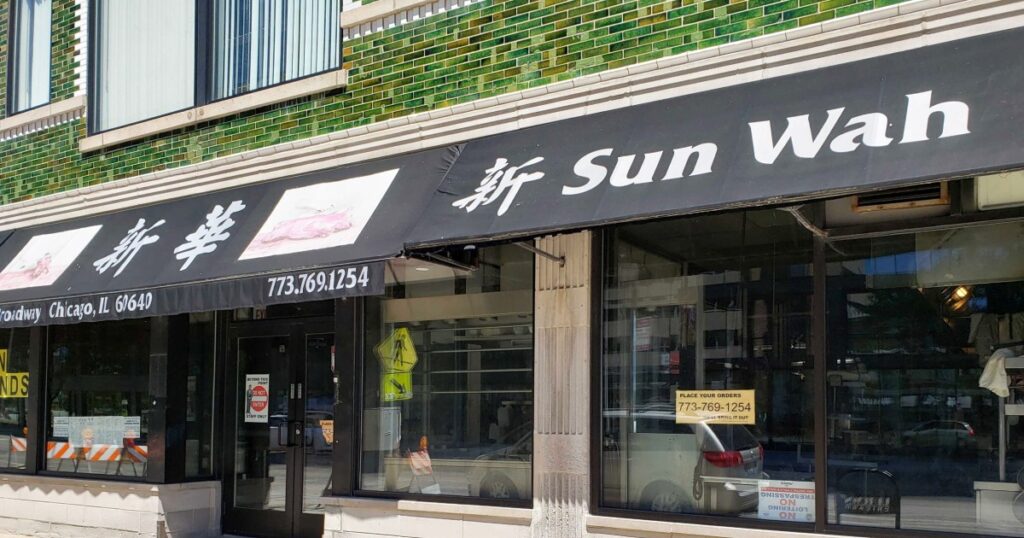By Jane Shin Agler
Chicago’s northwest side is ripe with Korean restaurants, but one stands out among its peers with ease. Since 1980, the Lincoln Square neighborhood’s Cho Sun Ok has been considered a destination; “the place” to Chicago’s Korean community and beyond. Just open its door, and you will understand why. Upon entering, customers are slapped in the face by the hazy aromas of barbecued beef and pungent banchan (Korean small dishes, such as kimchi and pickled bean sprouts) – in other words, the indicators that you are in the right place for the best Korean food in Chicago.
Yes, four decades have passed since opening; but Cho Sun Ok still sees a line of hungry Chicagoans outside its door at nearly every hour of the day, every day of the week, and for good reason. Think you can avoid a line at 3 p.m. on a Thursday? Think again.
Thankfully, Cho Sun Ok’s waitstaff and kitchen work rapidly, allowing customers to snag a table after a painless 20- or 30-minute wait. It is certainly worth it, because Cho Sun Ok does Korean food right (dare I say they make better Korean food than my own Korean relatives? Shhh, that’s confidential). Many come in and quickly order some KBBQ staples, eat, and manage to leave within a half hour.
However, some might want some help slowing down and taking time with their delicious meal – which, in that case, they should take advantage of Cho Sun Ok’s BYOB option. And LUSH is here to help.
Customers can order pretty much anything on the Cho Sun Ok menu and leave sufficiently satiated. However, there are some stars in their lineup that cannot be missed; and they are also Korean classics, for those who haven’t yet explored this mouthwatering, flavorful cuisine. In order to ensure the best experience possible, make sure to bring the perfect drink pairings, too.
To kick-off the meal, order the haemul pajeon, a pretty run-of-the-mill Korean seafood scallion pancake. At Cho Sun Ok, though, this dish is anything but run-of-the-mill. Fried in a thin layer of oil to soft, doughy perfection, Cho Sun Ok’s haemul pajeon can be shared among a famished group of four to as many as eight people. Bits of shrimp, squid and mini-octopi add a delightfully chewy texture to this savory pancake, and its accompanying soy-based dipping sauce brings the dish together in full.
Those partaking need a drink that will cut through haemul pajeon’s starchy, salty palette; which leaves several different options. And for perspective, Cho Sun Ok will not, by any means, drain your pockets. I wouldn’t consider it a “cheap eat” either, but it is certainly a less expensive option when compared to other Chicagoland restaurants. With that said, you might be more willing to invest in the drinks you bring, namely wine (if that is your choice).
A Rally Gassmann Gewürztraminer is a great choice for sipping alongside a plate of haemul pajeon. Deliciously dry, this Alsatian wine’s acidity and stone fruit notes are perfect for a chewy, fried delight. A crisp Chablis would also work, as would a dry Riesling (here at LUSH, we believe you can never go wrong with Riesling). Similarly, a Flemish sour ale would work – as our owner calls it, “the Swiss Army knife of beers.” These choices pair well with the variety of banchan on the table, too.
For the star of the meal, though, look no further than Cho Sun Ok’s tabletop cooking options. You can’t go wrong with any of these choices; especially because customers can cook the meats themselves, thereby preparing the food however preferred. If you don’t feel confident in your grilling skills, you can ask the staff to do it for you – sometimes, the staff will also opt to do it for you without asking (admittedly, you can make whatever you want of that, it’s nothing personal). The most classic choice, though, is a plate of simple bulgogi(tender and lean sliced beef). Marinated to perfection, Cho Sun Ok’s bulgogi is something to genuinely look forward to, especially because it’s an opportunity to open a tasty red wine. But what kind?
Bulgogi is richly marinated but not particularly fatty or spicy. Cho Sun Ok’s house marinade is a secret, but a typical bulgogi marinade is comprised of soy sauce, sugar, ginger garlic, pepper, sesame oil and scallions. As a result, a Cru Beaujolais makes for a good choice in pairing. A rich, smooth-tannin Trousseau is great for bulgogi, too. If you have some room on your bill to shell-out for something particularly special, you can reach for a Côte-Rôtie from Côte Blonde, one of the best soil beds in the region. This wine’s notes of pepper and spice pair perfectly with bulgogi, as long as you don’t overdo the spice in your overall meal (such as too much focus on the kimchi, which cannot be avoided – or, rather, should not be avoided. However, balance is key, here).
If you still have room in your stomach after all the banchan, haemul pajeon and bulgogi, I recommend getting one of Cho Sun Ok’s classic spicy cold noodle dishes, like their bibim naengmyeon or hwe naengmyeon. You’ll quickly feel your mouth is on fire a few bites in, so only one pairing is adequate: ice cold beer. In all honesty, any beer works because your mouth will be so numb you won’t be able to taste. Best to save this dish for the very end, with that in mind.
BYOB means “bring your own bottle,” but it really should be “bring your own bottles.” In other words, don’t just bring one drink option when you can bring multiple. Korean food is ripe with different flavors and sensations, and it excels at allowing eaters to consume a variety of dishes in just one sitting. Therefore, arrive at Cho Sun Ok prepared: with several bottles in tow.










